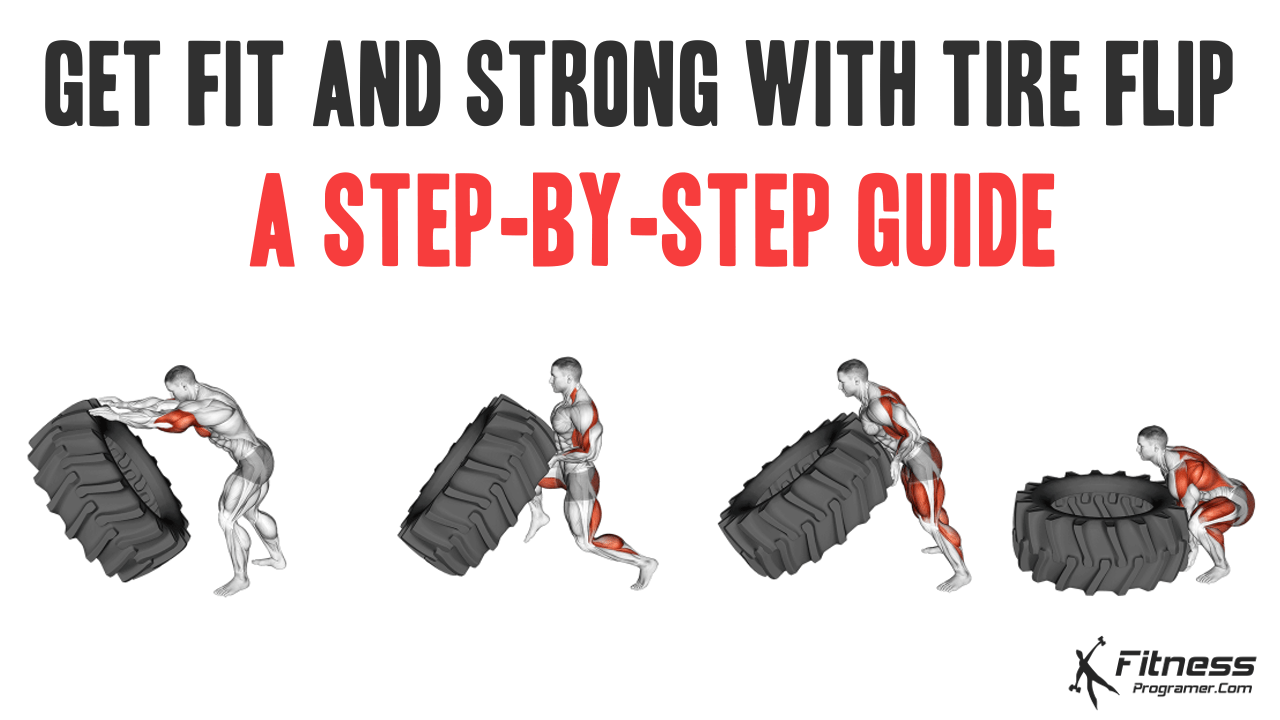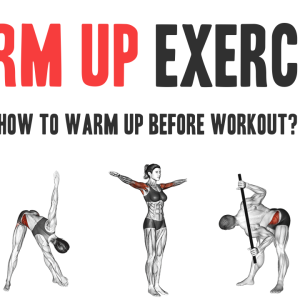Contents
Tire flip is a strength training exercise that involves flipping a large tire from one end to the other. The tire used for flipping is typically a tractor tire that weighs anywhere from 400 to 800 pounds. The tire flip requires the use of multiple muscle groups, including the legs, hips, back, and arms, making it an effective exercise for building total body strength.
The tire flip is a classic exercise in the world of CrossFit, but its benefits extend far beyond the gym. This intense full-body movement is a staple in strongman training and is becoming increasingly popular among athletes and fitness enthusiasts looking to build real-world strength.
Whether you’re an experienced athlete or just starting out, the tire flip challenge is a great option to improve your overall fitness and take your training to the next level. This exercise is a great way to build total body strength, power, and endurance, and can also help improve your functional movement and overall fitness level. In this article, we’ll explore the tire flip, a CrossFit classic with realistic benefits.
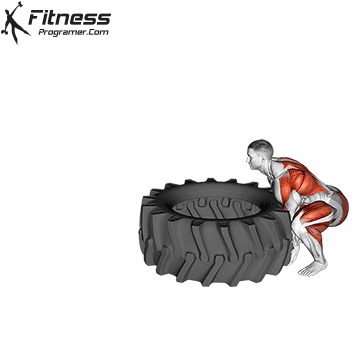
Benefits of Tire Flipping
Tire flipping is a demanding exercise that requires strength, power, and endurance. This exercise is also a great way to challenge both your mental and physical abilities, making it a great option for athletes and fitness enthusiasts alike. Here are some of the key benefits of tire flipping:
- Increased Strength and Power: Tire flipping is a full-body exercise that works multiple muscle groups, including the legs, back, core, and arms. By lifting and flipping the heavy tire, you will build strength and power in these muscle groups, which can help improve your performance in other exercises and activities.
- Improved Cardiovascular Fitness: Tire flipping is a high-intensity exercise that gets your heart rate up, providing a great cardiovascular workout. This can improve your cardiovascular health, increase your endurance, and help you burn calories.
- Enhanced Muscle Endurance: It takes a lot of energy and endurance to complete multiple reps in this exercise. By performing this exercise regularly, you will build muscle endurance and be able to perform other exercises for longer periods of time.
- Improved Functional Movement: Tire flip requires the use of functional movements, such as squatting, pushing, and pulling. These movements are often used in everyday activities, so improving your performance in these exercises can improve your overall functional movement and reduce the risk of injury.
- Mental and Physical Challenge: Tire flipping is a demanding exercise that requires both mental and physical toughness. By pushing yourself to complete this exercise, you will build confidence, increase mental toughness, and challenge yourself both physically and mentally.
These are just a few of the many benefits of tire flipping. By incorporating this exercise into your workout routine, you can improve your overall health, fitness, and well-being.
How to do a Tire Flip
Tire flipping is a challenging exercise that requires proper form and technique to ensure safety and maximize results. Here are some tips on how to do performing tire flip:
To perform tire flipping safely and effectively, it’s important to maintain proper form throughout the exercise.
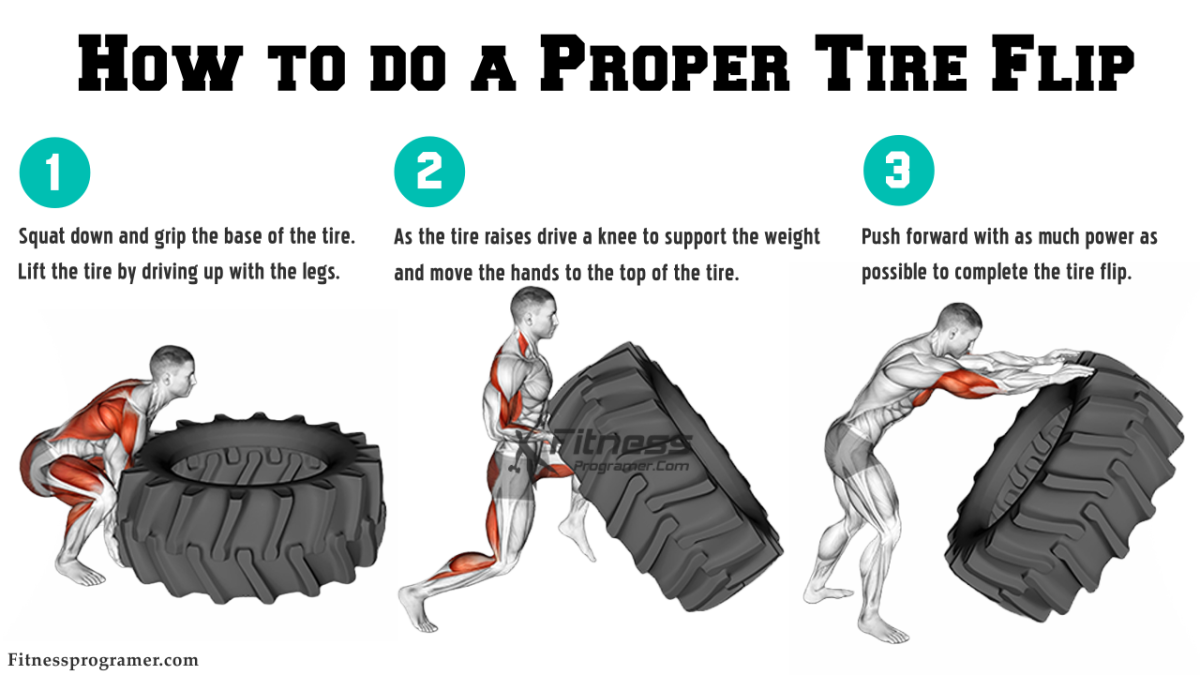
- Start by standing behind the tire with your feet shoulder-width apart.
- Lower yourself into a squatting position and grab the tire with both hands.
- Focus on maintaining a neutral spine and using your legs and hips to push through the tire.
- Push through your legs to lift the tire off the ground and flip it over.
- After standing up, use one knee to continue pushing the tire up.
- Finally, push the tire to the opposite side with all your strength.
- Repeat this movement for the desired number of reps.
Tips:
Proper Warm-up: Before you start exercising, you need to warm up your muscles properly to reduce the risk of injury. This can include a light cardio warm-up, such as jogging or jumping jacks, and some dynamic stretching, such as lunges and leg swings.
Common Mistakes to Avoid: One common mistake when flipping tires is using improper form, such as rounding the back or using momentum to lift the tire. Another mistake is not using proper grip, which can lead to injury. To avoid these mistakes, focus on maintaining proper form, using a proper grip, and using slow, controlled movements.
Tips for Beginners: If you’re new to tire flipping, start with a lighter tire and work your way up to a heavier one. Focus on proper form and technique, and avoid using momentum or swinging the tire to complete reps. Start with a small number of reps and gradually increase as you get stronger.
Progressions for Advanced Individuals: For those who are more advanced, you can progress by using a heavier tire or increasing the number of reps.
By following these tips and techniques, you can perform tire flipping safely and effectively, maximizing the benefits of this challenging exercise.
Tire Flip Muscles Worked:
To initiate the flip, your biceps, legs, glutes and back are engaged. Once the tire is ready to be pushed over, you’ll work your shoulder, chest, and triceps.
The tire flip exercise targets several major muscle groups, including:
- Legs: The large muscles (quad and hamstring) in the front and back of the thigh are heavily engaged as you squat down to grab the tire and stand up to flip it.
- Glutes: The muscles in the buttocks are also activated during the standing portion of the tire flip, helping to generate the power needed to flip the tire.
- Biceps: It provides the force needed to lift the tire off the ground during the first part of the movement.
- Triceps: The triceps, along with the chest and shoulder muscles, are involved in the pushing movement required to flip the tire.
- Back muscles: The muscles in the back are used to stabilize the spine and maintain proper posture as you flip the tire. The back muscles, including the erector spinae, latissimus dorsi, and trapezius, work to support the spine and upper body, allowing for a stable base from which to push the tire away from the body.
- Core muscles: The muscles in the abdomen and lower back are activated to maintain stability and control as you lift and flip the tire.
- Hip flexor: While the hip flexors may not be the primary muscles worked during tire flipping, they may be engaged to a certain extent as the movement involves lifting the tire from the ground and pushing it upwards with the legs.
- Hip extensor: The hip extensors are the muscle group heavily involved in the tire flip exercise. They work with the gluteus maximus to provide power and speed during the tire flip.

How to Incorporate Tire Flipping into Your Workout Routine
Tire flipping can be a great addition to your workout routine, providing numerous physical and mental benefits.
It’s important to pair tire flipping with other strength training exercises, such as squats, deadlifts, and lunges, to target multiple muscle groups and achieve a well-rounded workout. Also, tire flip can be done as a standalone workout or incorporated into a full-body workout.
For tire flipping, a typical workout might include three to four sets of five to eight reps with one to two minutes of rest in between sets. The number of sets and reps can be adjusted based on your fitness level and goals. It is recommended to start with a lighter tire and gradually increase the weight as you get stronger.
You can include tire flipping in your workout routine two to three times a week, or at least once a week. It is important to rest your body and allow adequate recovery time between sessions.
A typical tire flip workout may include the following steps:
- Warm up: Perform a 5-10 minute warm-up, such as jogging or jumping jacks, to get the heart rate up and prepare the muscles for the workout.
- Tire Flip: Repeat this motion for a set number of reps or for a set amount of time. (For example; 3×8 reps or tire flip for 30 seconds)
- Rest: Take a short rest period between sets, such as 60-120 seconds, to catch your breath and allow the muscles to recover.
- Repeat: Repeat the tire flip for multiple sets, gradually increasing the weight of the tire or the number of reps as your strength improves.
- Cool down: End the workout with a 5-10 minute cool-down, such as stretching or light cardio, to help the body recover from the workout.
By following these guidelines, you can safely and effectively incorporate tire flipping into your workout routine, reaping the many benefits of this challenging exercise.
Tire Flip Workouts
1- For time
The goal is to complete the workout in the shortest amount of time possible, with the time taken to complete the workout being the score. These types of workouts can be highly effective for building endurance, improving cardiovascular health, and developing mental toughness.
| 3 Round for time | ||
Tire flips | 5 reps |  |
Box Jump | 10 reps | 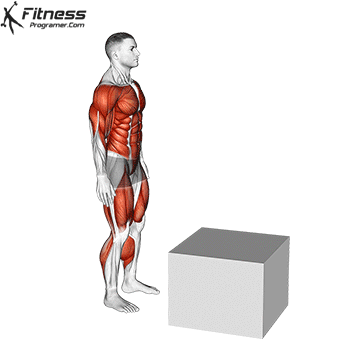 |
2- Amrap
It is a type of workout that involves performing a set of exercises for a specific period of time, usually between 10 and 20 minutes. The goal is to complete as many rounds or repetitions of the exercises as possible within the time limit.
AMRAP workouts are often used in Crossfit or high-intensity interval training (HIIT) and can be a great way to challenge your fitness level and improve your overall endurance.
| Amrap 10 min | ||
Tire Flip | 4 reps |  |
Box Jump | 20 reps |  |
Burpee | 12 reps | 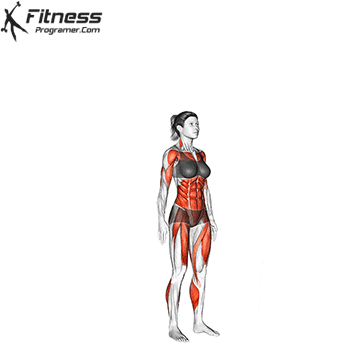 |
3- Circuit Workout
Below is a brief overview of a circuit workout that features tire flips.
A circuit workout is a type of training in which a series of exercises are performed in a specific order with little to no rest in between. The goal of a circuit workout is to work the entire body or specific muscle groups, improve endurance, and burn calories.
- Tire Jump: 10 reps
- Tire Flip: 10 reps
- Tire Farmers walk: 20 meter
- Tire Push-up: 10 reps
- Step ups on Tire: 10 sec
- Tire Dips: 10 reps
- Tire Sit-up: 15 reps
4- Full body Workout
A full-body workout is a type of exercise routine that targets all major muscle groups in a single session.
It’s important to choose a weight or resistance level that challenges you but allows you to maintain proper form throughout the entire workout. It’s also a good idea to incorporate rest periods to allow your muscles to recover between sets.
- Tire flip: 2 x 8
- Push press: 2 x 8
- Squat: 2 x 8
- Pull-up: 2 x 8
- Bench Press: 2 x 8
- Plank: 60 sec
The Bottom Line
In conclusion, tire flipping is an excellent exercise for building total body strength. By incorporating tire flipping into your workout routine, you can work multiple muscle groups, improve functional movement, increase power and explosiveness, and challenge yourself mentally.

